




For this project, I have been asked to consider and produce an understanding in regards to the recent rebirth of Prada, which since its beginning has seen many iterations of its story over several generations. Belgian fashion designer, Raf Simons, was introduced to Prada in 2020, where he joined Miuccia Prada as an equal creative director with aims to revitalise the powerhouse’s success. Since his introduction, Prada has become one of the most relevant brand platforms of our time, as their story-filled narratives which shape each collection, campaign and show, have provided an all-around social, political and ecological commentary of our world today.
By exploring the history of Prada, I have been asked to develop ways to understand th;oe brand’s unique viewpoint on storytelling, emphasising a focus on the unique ideology that Simons uses to convey a story through each of their collaborative collections together. In order to reshape this for the next generation, I will need to look at the cultural, social and political position of each collaborative collection within fashion history, whilst developing a complete understanding of Raf Simons as a designer in order to piece together how his work gels alongside Miuccia Prada’s so well.
This research book showcases the beginning of my journey to creating something new for the brand, delving deep into Miuccia and Raf and their partnership together, in order to tell a new story for the house of Prada’s next generation.
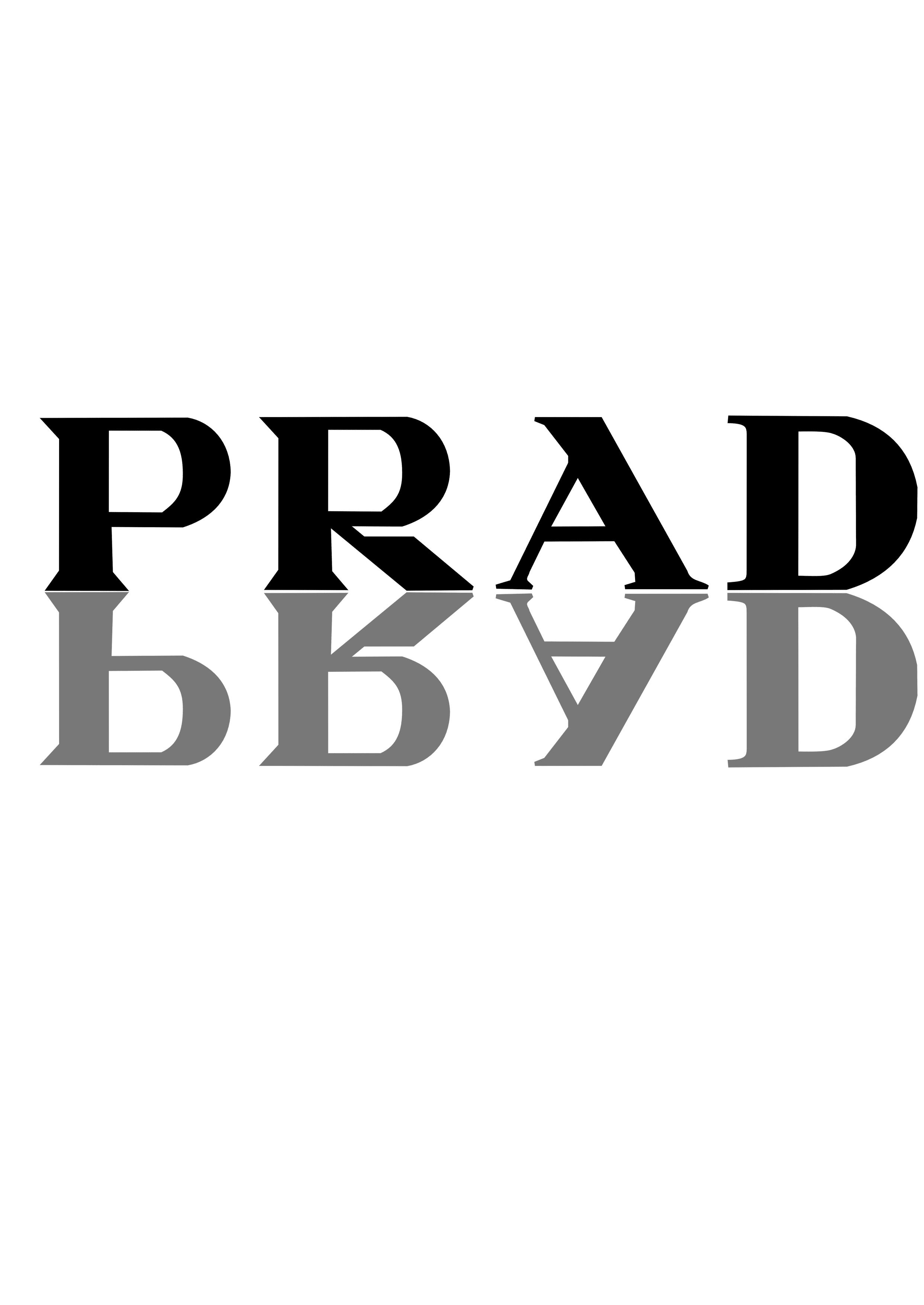
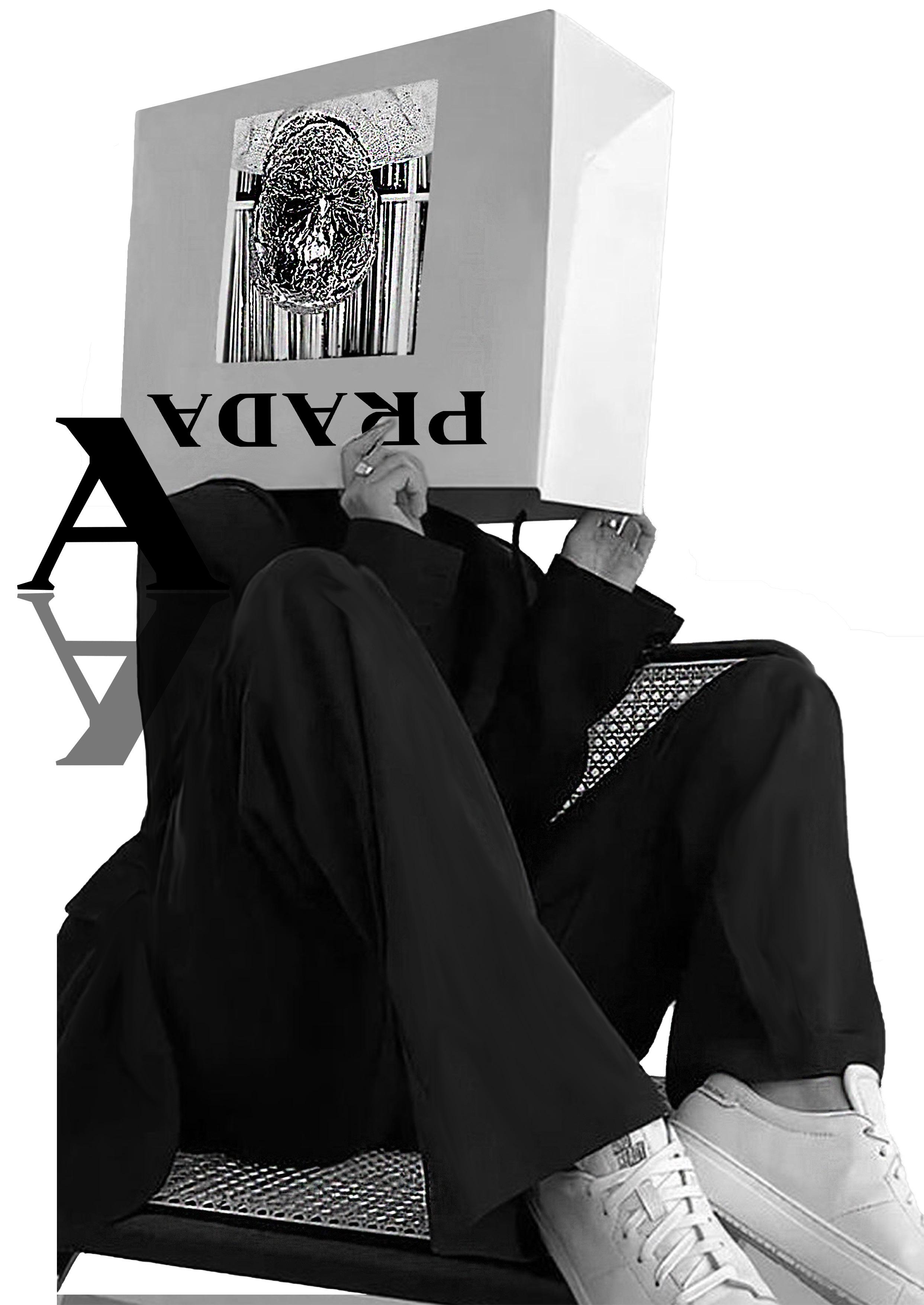
In 1913, the Prada brand was founded by a man called Mario Prada, who began selling leather goods such as bags, trunks and travel accessories, in Galleria Vittorio Emanuele II, in Milan, where the first store was opened. The brand swiftly gained a prestigious reputation among upper-class Italians, leading to particular success in 1919, which saw Prada obtain the Official Supplier of the Italian Royal House title, which allowed the brand to embed the House of Savoy coat of arms and knotted rope design onto its logo; this is something which remains today. This logo gave Pradagreatentitlement,byintroducingthe brand as a benchmark for Italian
gentility

Mario Prada’s granddaughter, Miuccia Prada, began working for the company in 1970 post to her previous education at Milan University, where she studied Political Science. Despite the radical change in her profession, joining Prada proved to be a successful transition for Miuccia as she stands as the head of the company today.
A little while later in 1977, Patrizio Bertelli’s introduction to Prada as business manager enabled a great partnership between himself and Miuccia, allowing them to specialise in producing high-end leather goods in order to form the foundations of the company’s future international success.

In 1979, 9 years after joining the brand, Miuccia’s influence created a significant change for Prada. Her initial designs of backpacks and totes, which were made out of the same leather previously used by her grandfather, were released, alongside Prada’s first footwear collection for women.
Prada’s second boutique was born in Via della Spiga in 1983, before expansions during the following year, where stores were opened in Paris, Florence, New York and Madrid.
1984 also saw the beginning of the iconic classic Prada handbag, made from ubiquitous black nylon. After proving to be an instant success through its simple and sleek nature, the timeless piece remains within the brand’s DNA today.
Through its debut at the Milan Fashion Week in 1988, Prada launched its first ready-to-wear collection for women, which shifted its focus to fine lines and basic colours. This debut was Miuccia’s first-ever show, which, unfortunately, went on to cause a scandal among other industry players that did not understand it. The collection riffed on Miuccia’s own wardrobe, possessing pieces of blacks and browns, which reflected a school uniform style and demonstrated a reflection
of how she wore her own clothes, such as wrapping and clasping wide coats shut. These ideas contrasted alternative ideas during the 80s, which suggested that ideas of excess were synonymous with luxury.
When referring to her first show, Miuccia said

“It was not for the classic ones - there was something disturbing. And for the super trendy avant-gardists, it was too classic. I always like to move in that space, and never please anybody. There is always something disturbing, which is probably what I am, and I like.”
Despite the negativity surrounding the show, the collection ultimately rewarded Prada with outstanding success in the 90s, through its ability to produce highly desirable clothing that blended key attributes of simplicity, luxury and elegance together.
In 1993, not only was Prada awarded for its accessories by the Council of Fashion Designers for America but it also welcomed the Fondazione art museum in Milan, which houses pieces of contemporary art, presenting exhibitions and monographic commissions by a range of international artists including John Baldessari, Walter De Maria, Steve McQueen and Louise Bourgeois. In the same year as this, Prada also continued to receive recognition from the CFDA, by giving the brand the award of Designer of the Year.
The following year, 1996, Prada continued expanding by opening their largest store so far, located in Manhattan, this was now the second one in New York.

Before the end of the 90s, Prada launched its ready-to-wear line for men, proving further expansion, as well as its own leisure line. The leisure line, which was renamed Linea Rossa in 2009, performed as an inimitable purveyor of athleisure, merging metropolitan-like clothing with elements of ‘technical mountain wear’ in order to create something to encapsulate futurism. The sports line refused to deny any material, utilising previously ‘taboo’ textiles with such ease. One of the first designer tracksuits was designed by Prada, made up of industrial nylon, a tough utilitarian material,
commonly used for the mass production of parachutes. Despite negative opinions surrounding the usage of the material, i ndustrial nylon was used profusely by the brand, proving to provide great success during the production of Prada’s monochromatic designs.
Eyewear, fragrance and even mobile phone ranges were established within the brand as the 2000s were underway, in addition to Prada’s 2004 ongoing travelling exhibition, “Waist Down”. The exhibition demonstrates the collaboration between AMO and architect Rem Koolhaas, which showcases the brand’s most unique and meaningful skirts that have been created ever since ready-to-wear for women was introduced. “Waist Down” has been hosted in various locations including Tokyo, LA, NY and Seoul, over a time period between 2004 and 2009.

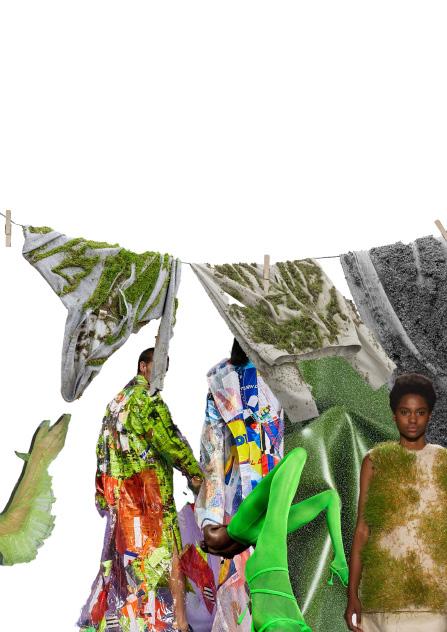

 Responsibility)
Responsibility)
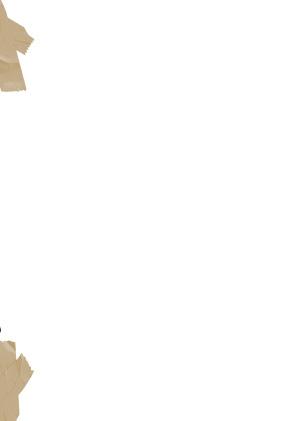
“Conscious and responsible, the debut of the Eternal Gold fine jewellery collection reflects Prada’s ongoing commitment to sustainability across every facet of its business and a constant challenging of the conventions of modern luxury.”
Lorenzo Bertelli
(Head of Corporate Social
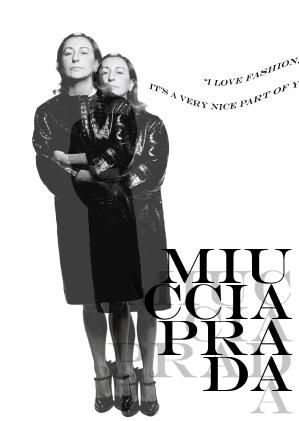
Miuccia Prada is the youngest of three siblings, which were born and raised by Luisia and Luigi Bianchi in Milan, Italy. She remains living in the apartment that she was born in today, where she lives with her husband, who also hosts the role of co-CEO of Prada, Patrizio Bertelli. The couple had two sons together in 1988 and 1990, and their relationship is always spoken about in high regard by Miuccia, who claimed “If I hadn’t of met him I probably would have given up, or at least not been able to do what I have done”.
Miuccia uses a narrative approach when designing, in order to blend her work with ideas taken from her everyday experiences. She uses this technique as she understands the value of quality and lays great importance in her work on the historic artisan mastery which is integral to Prada.
During the 70s, Miuccia was a member of the Italian Communist Party and she was involved in women’s rights movements; this fight towards justice for women is often apparent within her work, where she attempts to design clothes that consider a woman’s curves, whilst still showcasing a sense of fun. As an intellectual designer, Prada often uses her personal beliefs to convey a fight against beauty within her work, which she has previously expressed that she thinks of as ‘bourgeois’. Her media incarnation is anything but fancy-free, as she works in a way to uplift women, whilst also possessing a classic and effective stance.


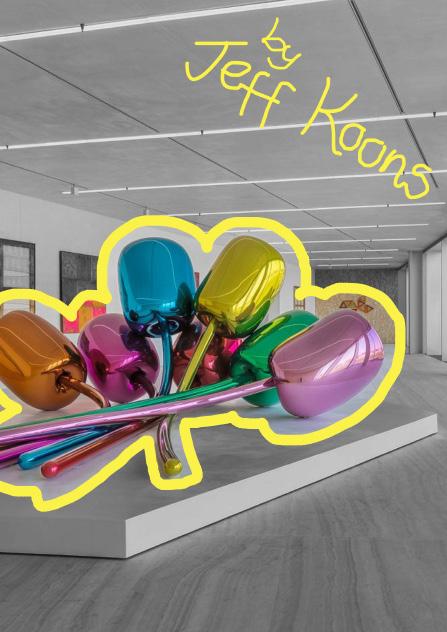
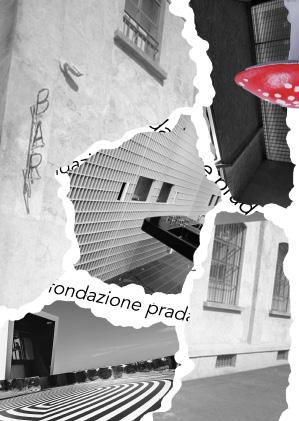
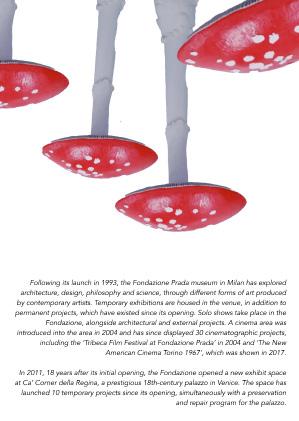

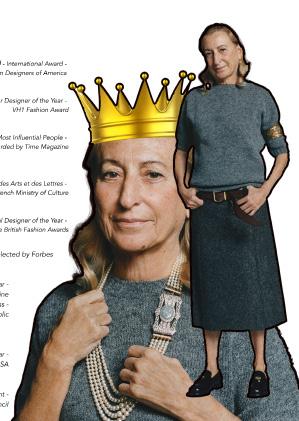
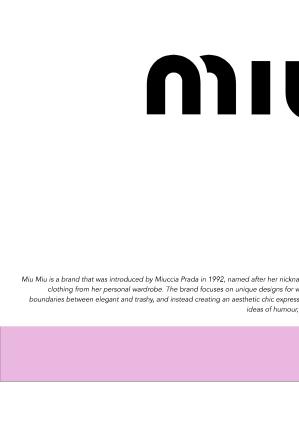

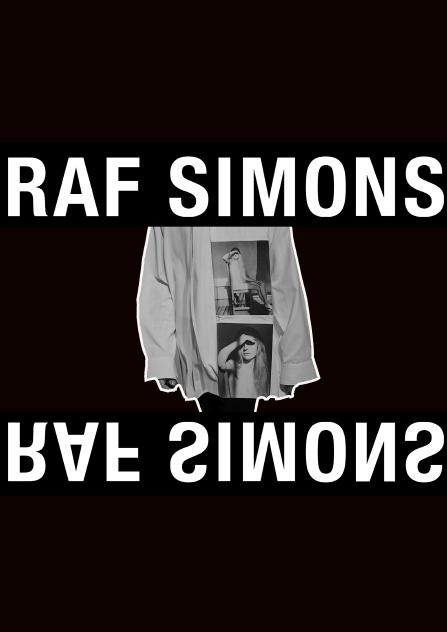
Raf Simons is a ready-to-wear clothing designer, that was born in Neerpelt Belgium in 1968, and is particularly known for his sleek and minimal approach to conveying a clean and strong hero aesthetic. He possesses a knack for producing designer clothing for men that is practical, as often industry styles can be seen as ‘too eccentric’ for straight men to wear. Simons loves working in black and white and often uses models with refined striking features, that don’t fit typical industry norms, enhancing their presence of being ‘ugly yet desirable’. Through his focus on simplicity and slick large-scale level branding, Simons often plays with sexuality and gender by producing and cutting genderless, unisex clothing, which blurs the lines between the genders.
Post his internship at Walter Van Bierendonck’s design studio, where he worked on the presentation and decoration of the showrooms and collections, Simons graduated in industrial design in 1991 and began working as a furniture designer for galleries and private interiors. However, as a result of encouragement from Linda Loppa (The Head of the Fashion Department of the Antwerp Royal Academy), Simons made the decision to radically change his profession in 1995, becoming a self-trained menswear designer and launching his own label.
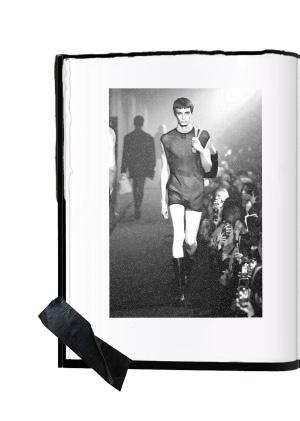

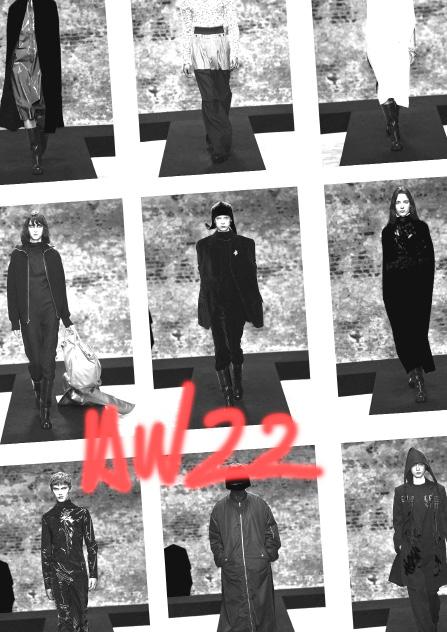


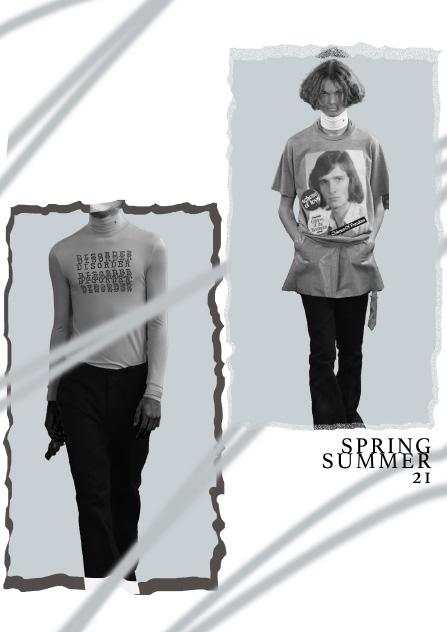
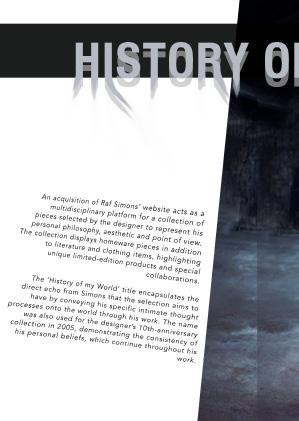
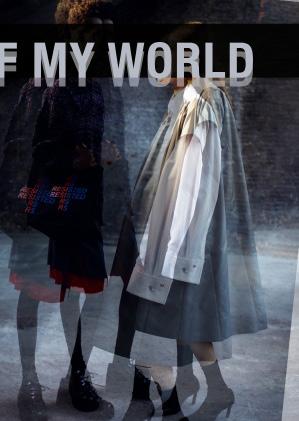
Prior to his current position as co-creative director at Prada, Simons has also held major roles within Jil Sander, Chrisitan Dior and Calvin Klein.
He began working as creative director of Jil Sander in July 2005 and remained in this role until February 2012. In the just short of 7 years that he worked for the brand, he aided its mission to preserve its reputation for pared-down, sculptural suiting, after its intrigue by his suit-making abilities that they recognised from his own label. Simons achieved huge amounts of success during his time at Jil Sander, he continuously produced new shapes and styles throughout the seasons, whilst always keeping in touch with the brand’s specific streamlined minimalism.
In April 2012, Simons was nominated to become the artistic director of Christian Dior for their women’s haute couture, ready-to-wear and accessory collections. This demonstrated a contrast from his previous work in menswear, providing a challenge for him to shift his focus to t he opposing gender. In the summer of 2012, Simons presented his first haute couture collection for the brand, which conveyed emotional and intellectual resonance. When speaking about the collection, Raf himself said,

By using his unusually heightened sense of focus, Simons engaged the collection to reflect on Dior as an architect, perfectly connecting to his personal obsession with construction.
His work for Dior came to an end in August 2016, as Simons decided to leave the company to embark on his next adventure as the chief creative officer at Calvin Klein. Speculation regarding his departure from Dior took place at the time, with Simons explaining that the amount of work and the pace that he was required to work at Dior, simply became too much for him.
In an interview with Amuse following his exit, Simons explains the importance of connectivity between himself and the brand that he is working for, whilst going on to say that with some extremely high-end brands, it just isn’t possible to reach this. During the interview, Simons went on to say that the accessibility that is connected to Calvin Klein is one of the things that drew him in, as he recalls his obsession with the brand Helmut Lang when he was younger, however, was unable to afford any of their products.
Simons’ time at Calvin Klein offered him great success, as he won multiple awards for his work towards the brand, including womenswear and menswear designer of the year awards, as well as the prize for ‘General Cultural Merit at the Ultima’s’, which was granted by the department of culture, youth and media of the Flemish Government. Despite his personal achievements whilst working for the brand, Simons was forced to leave his role at Calvin Klein in 2018, 8 months before the end of his contract, as he was regarded to be ‘high-handed and secretive’ by the brand. Senior Management at Calvin Klein grew opposed to his work for the brand, in the belief that he was disrespecting its original DNA of being ‘minimalistic yet sexy.’
As of April 2020, Raf Simons’ adventure with Prada began, as he became co-creative director of the brand, working alongside Miuccia Prada and sharing responsibilities for the creative input and design making of Prada.

“To be really honest, the attraction and the reason why I came to Calvin Klein is because it has the highest and the lowest and everything in between, so you can reach out to everybody. Which, in high fashion, is not always easy. It was not something that was possible at Dior, for example. It is possible at Calvin Klein.”
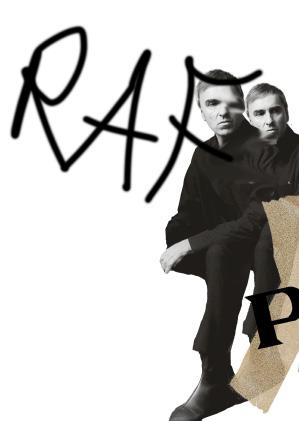
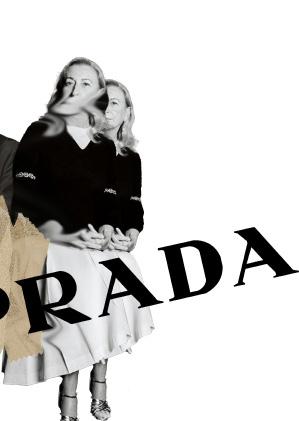
Pride in individuality is one of the most important messages that Simons attempts to communicate in his work and this idea partnered with his contrasting love for both rebellious youth cultures in addition to traditional menswear, supports him in presenting a radically different image of masculinity. These ideas regarding individuality are always at the core of his designs, being reflected through attitudes, moods and statements that support this approach towards independence.
His work often seeks inspiration from confident outsiders, whilst aiming to reach those embarking on that pathway too. Words often play a substantial role in Raf’s work, by summarising the kind of world that he wants to project through his designs.
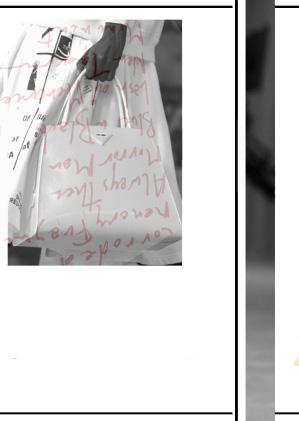
Raf Simons works in an extremely intelligent way that creates the ability to blend the energy and singularity from teenage subcultures, with key characteristics drawn from classical sartorial craft. Even when his designs are inspired by historical and classical references, they always address ‘the now and tomorrow,’ highlighting his consistent mission to support innovation.

Despite constant evolutions from when he began designing, Simons ensures that his key elements remain consistent throughout all of his work over the years. These elements include modern proportions, up-to-date research in regard to fabric and textiles and a strong partnership of construction and shape in terms of the body and shape of a contemporary man.
The aims of the partnership express the opportunity for a new dialogue between two of the most influential designers today, creating radical change for Prada, which has been used to the idea of singularity within creative authorship. As the synergy of this partnership appears to be a far-reach and an arguably unsuited combination, it reflects the ever-changing era that we are currently living in, with new possibilities being unimagined. The collaboration allows a new point of view to be approached, breaking the norm from Prada’s established methodologies.
Much like the work of Simons, innovation is a vital facet of Prada’s identity, as the brand continuously strives to push boundaries and experiment with new things ahead of others within the industry. This ideology intertwined with Simons’ approach to always addressing ‘the now and tomorrow’ suggest a successful partnership of pure vision of creativity between the two designers for future innovation and the experimentation of new designs.
Prada’s values and ethos as a brand remain unchanged, with its radical creative dialogue becoming the philosophy of both designers, due to the synchronisation of their individual histories coming together to express reinvention, provocation, brave exploration and the power of ideas.
Spring/Summer 2021 womenswear show was the first collection that was designed by Miuccia Prada and Raf Simons in collaboration, and it was digitally presented on 24th September 2020 in Milan, around 5 months after Simons joined the brand.

The collection was made from pure and honest materials, including light jersey, fleece and nylon, all of which were used in the production of Raf and Miuccia’s favourite piece in the collection; the rectangular wrap. Miuccia described the versatility of the item, commenting on its simplicity and ability to be worn in many different ways. The protective and sensual nature of the piece, which evolved from
their dialogue and thinkng, demonstrates, that one piece can take such different identities purely from its material. Raf believes that the piece expresses femininity and expression, two vital characteristics within fashion today, as he described its ‘non-construction’ coming down to the fact that it can’t be defined as anything in particular. The undefined shape of the style feels quite liberating as it offers the ability for individuals to use it in whatever way they want, without being forced into a particular look.
An interesting attribute of the collection was the clever entwinement of Simons and Prada’s individual styles. Full skirts have been a part of Miuccia’s DNA since modern years, much like the role of hoodies for Raf, therefore the pair decided to incorporate the concept of these two styles in an unlikely combination, demonstrating their two separate worlds crashing and moulding together.
During their interview, Miuccia expressed her previous desire to include writing graphics in her designs, however, has always felt like this wasn’t something that came naturally to her, therefore she hasn’t previously felt confident enough to do it herself. She explained that she always enjoyed its role in Raf’s work, and so has welcomed the idea of it since his introduction to the brand. Both designers believe that the writing comes from thoughts and reflections, passed down by inspiration of contemporary and future life.
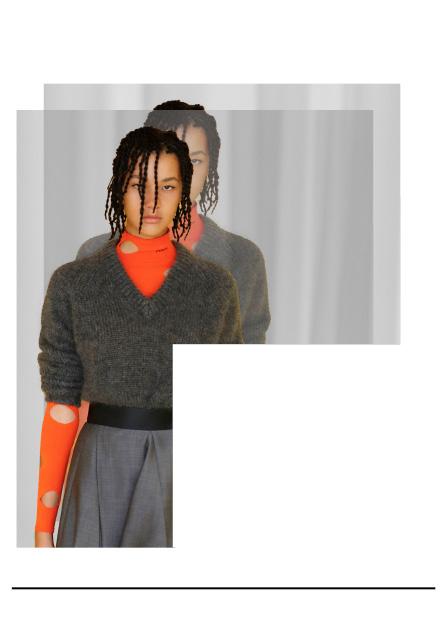
Despite being exceptional storytellers, Miuccia and Raf wanted their first collection together to be non-narrative, meaning that it wasn’t based on a story or a specific idea. This meant that the inspiration for the collection was left very opened-ended, as it didn’t have one clear direction for them to follow, allowing them to extend their creativity, with a strong basis on their personal senses and feelings.
Raf described how Miuccia’s individual persona inspired him for the collection, in addition to their dialogues prior to and during it. The content of their previous work from over the years acted as inspiration, hence the full skirt and hoodie designs, in order to create something that was both commercially and creatively appealing.
Black graphics were used on white prints, showing their aims to marry the sophisticated with the utilitarian, as written in the show’s notes. Minimalist silhouettes were used in order to mirror Prada’s previous work from the late 90s and early 00s. In addition to this, nearly every piece of the collection featured the Prada logo, as the designers aimed to interoperate it as a design element.

• Throughout the lockdown, Miuccia realised the importance of technology and how it almost acts as an extension of ourselves.
• The importance of sustainability and exclusivity is always at the forefront of their minds, considering and embracing these aspects throughout their designs.
• Their partnership was very much spontaneous, it wasn’t something that was previously planned, despite initially being introduced when Miuccia offered Raf his position at Jil Sander many years ago.
• They both speak extremely highly of each other, expressing the trust that they have for one another and in their opinions, as well as the similarity that they have in terms of their likes.
• Simons described the experience of designing alongside Miuccia to be very ‘natural’ and fun, going on to say that he feels at ease in the situation.
• Both designers express an interest in each other’s thinking.
• They agree that fashion can be artistic but by definition that it is not art.
• Miuccia never originally wanted to be a fashion designer as she felt that it contrasted with her feminist beliefs in the 60s, therefore wanted to do something more political.
• This is similar to Raf, who never wanted to accept himself as a fashion designer, therefore stopped after 5 years, but realised that he missed it too much. He didn’t want to accept this profession as he didn’t believe that the importance of fashion meant enough, so he kept putting it in the context of being a doctor or architect. After his friend opened his eyes to the importance of fashion being inspirational for people, Simons began designing again.
• Miuccia expressed the vitality of constant studying within the industry, particularly through literature and movies, in order to gain a stronger understanding of the life of people, and ultimately gather inspiration.
• Every girl in their first show was a girl that had never done a show before and the cast was kept small, in order to make it easier to find out more about their characters. This meant that it was a new situation for almost everybody that was involved in the show.

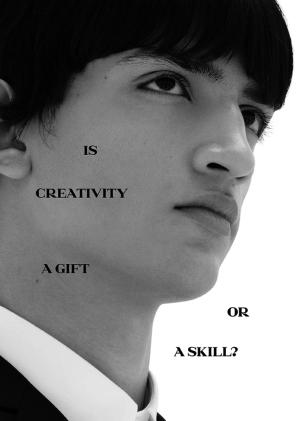

The following collection designed by the pair was the Prada Fall Winter 2021 menswear collection, entitled ‘Possible Feelings’. The narrative of the collection explored ideas of contact, expressing the intimate and personal wish for humans to exchange and relate to one another. Concepts of individual freedom took control of the collection, through the importance of our senses to feel and experience tactility, encouraging Simons and Prada to create emphasis on surface, texture and textile.
Miuccia and Raf’s passionate interest towards nurturing the next generation of future creatives through education is apparent from the conversation that they held to conclude the runway show, with a variation of students from different fashion and art colleges and universities. The conversation, which featured students from educational institutions including Bunka Fashion College and Central Saint Martins, gave them the opportunity to personally speak with Miuccia and Raf via video chat, offering them the chance to ask questions relating to the collection.

In order to tell the story of sensory stimulation in individual freedom, the collection consisted of an array of geometric-patterned jacquard knits and leather, combined with nylon, bouclé tweeds and of course a classic pinstripe wool suit. Both traditional and unanticipated colours were used in the designs, which also explored the concept of a ‘second skin’. This ideology was demonstrated in the jacquard-knit bodysuits, which served to provide the silhouette with dynamic movement. Due to the belief that the abstraction of feeling introduces the abstraction of freedom, the purpose of the bodysuits was to paradoxically reveal the body whilst also still concealing it by covering the form.
As the focus of the senses is key to this collection, the show space embraced bright colours that acted in a way to excite. Ideas of being inviting and seductive, whilst hard and soft, warm and cold were explored through the notion of the show’s ‘non-spaces’, which showcased panes of marble, resin, plaster and faux fur. The complete contrast and versatility of everything involved, allowed for complete freedom towards interpretation and expression for the viewer, reaching the aims of the collection. The soundtrack used in conjunction with the show resonated with the situation of the world at the time, having just come out of the global pandemic, the importance that fashion and music have on us, as an escape to expression is key.

Miuccia and Raf’s collection for Prada Fall Winter 2021 womenswear took inspiration from the idea of change. Transformation and the idea of opening possibilities were encouraged, through the ideology that men and women hold their own masculine and feminine nature within themselves. Themes of conventional polar opposites were explored, honing in on the point between simplicity and complexity; elegance and practicality and limitation and release.
Through their mission to transgress the boundaries of convention, Miuccia and Raf designed pieces that mirrored the freedom of the body and its energy, through fitted garments which also possessed substitutions, which allowed for skin to be exposed. The different designs explored ways to show glimpses of the body, even through a tailored suit, expressing the important attitude of movement.
The designs were translated in a way of multi-purpose, with the ornament being functional, whilst the pragmatic remains decorative. Evening gowns existed as utilitarian jumpsuits and traditional tailored coats were executed in bright colours in order to represent mutations between antonymous purposes. New forms of outwear were introduced by re-nylon rectilinear wraps, which although appear differently through the usage of jacquards, faux fur and sequins, still retain their closing nature to respect the collections symbol of protection and grace.

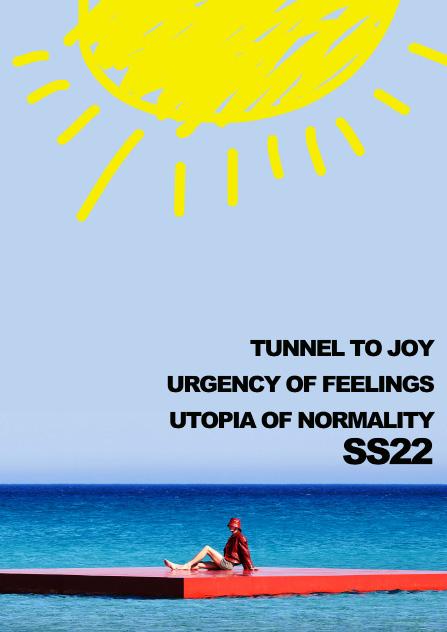

The Prada Spring Summer 2022 collection for men, explored three key ideas which consisted of ‘tunnel to joy’, ‘urgency of feelings’ and ‘utopia of normality’.
A perfect interaction of nature and artefact took place throughout the show space, which was filmed in both Sardinia and the Fondazione, demonstrating the ideal scene of a summer escape for the viewers. The tunnel was lit by a meandering red colour, whilst granite boulders and a clear sea landscape existed around the surreal encounter between nature and the seaside. As a way to show thanks and support to the Sardinian community, the collection supported the MEDSEA Foundation, which strives to restore marine ecosystems as a result of the reforestation of posidonia oceanica meadows in Capo Carbonara. As the posidonia oceanica is a marine plant, which is endemic to the Mediterranean Sea, it provides a vital habitat for marine animals, whilst playing an important role in fighting climate change, through its ability to absorb carbon dioxide.
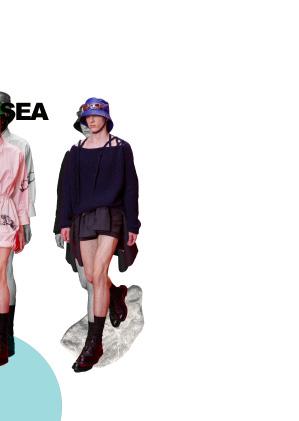
The narrative following the Spring Summer 2022 collection for Prada considered ideas of seduction through clothing, by expressing sexuality. This encouraged the ‘stripping down’ of clothing to display more of the exposed body.
Specific tracing details of clothing are explored throughout the collection, consisting of elements including the corset boning and the curve of a brassiere being stripped to their core. Much like how events from the past work to shape our present, previous forms of pieces explore new variations, working to abstract from the body rather than holding it. Previous constrictive connotations of these pieces were reconsidered in a way to free the body through unanticipated contexts of satin double and scarlet lace.


For Miuccia Prada and Raf Simons’ Fall Winter 2022 womenswear collection, an ideology of Prada became the etymology of beauty, due to its fundamental principle which fascinates with the reflection of humanity. The inspiration of the collection aimed to commemorate life and living, encouraging the importance to live each and every moment of life to its fullest. Memories of lives are valued through the glimpses of tradition within the collection, which passes culture between generations to evoke fragments of personal narratives, which explore the history of women.
The collection explores enhancing pieces with new emphasis this was achieved by pieces with the language evening clothes, working disturbed each of their aesthetic The combination of traditions unexpected manners, by specifics including the material of the garments. Coats are neck or the back demonstrating how conventionally pieces can be transformed characteristics with feminine architecture of clothing affects the body, therefore transforming to give the garments appearance and approach made glances at Prada’s the brand’s codifications order to display Juxtapositions occur between and their construction, as collection is combined silhouettes, reflecting the through geometric embroideries
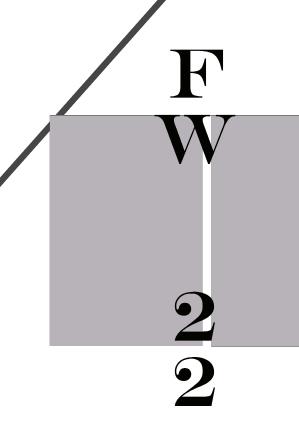
enhancing pragmatic emphasis and significance, combining tailored language conveyed from working in a way which aesthetic vernaculars. traditions collides in by challenging item material and detailing are carved out at the back of the collection, conventionally masculine transformed by altering their feminine interruptions. The affects its rapport with transforming this worked garments new forms. The approach of the collection Prada’s past, investigating codifications and meanings in display its archaeology. between the garments as the surface of the combined with the spare the heritage of Prada geometric jacquard prints, embroideries and colours.


TOUCH OF CRUDE is the Spring Summer 2023 collection for women by Miuccia PRADA and Raf Simons, designed to present a sequence of different realities, reflections, refractions and observations, with dissimilitude and paradox being played on within the collection in order to demonstrate a shift being visions. A paper-based fabric is used for a series of dresses, being torn against the body to create an illusion of intimacy, whilst traces of life convey the garment’s forms through rifts, twists, creases and folds. Opera coats were fused with leather jackets, showcasing a cross between day and evening wear, meanwhile, the intimacy of home was explored through the fusing of pastel hues and outerwear. This blurred distinct realities, in comparison to the bodysuit designs of poplin shirting, which represented a notion of Prada uniform and a sense of minimal reality.


The most recent Prada menswear collection designed by Miuccia and Raf is for Fall Winter 2023, entitled ‘Let’s Talk About Clothes’, due to its focus on the meaning and value of clothing as a fundamental of fashion. The collection explores modern precepts of reduction and simplicity combined with contradictions of comfort and intimacy, where literal and ideological pieces of heritage are inherited by new garments, in the form of graphic prints and knits laid on bare skin.

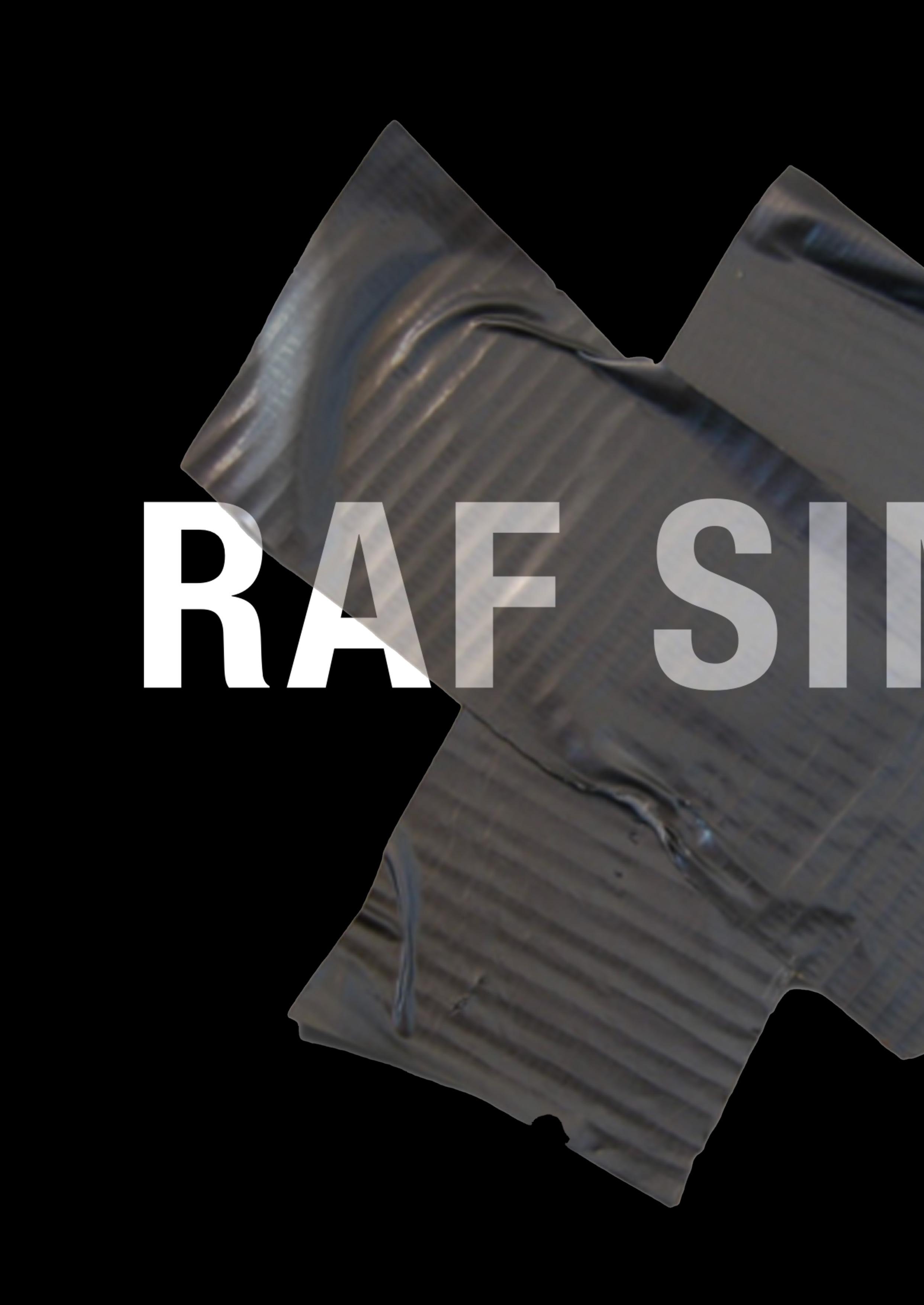
At the end of last year, Raf Simons announced the closure of his brand, 28 years after its birth in 1995. Speculation has emerged surrounding whether this decision was made in preparation to take over Miuccia Prada as the sole creative director of Prada, as the trust and regard she has for him is something that she has been unable to find elsewhere in previous years.
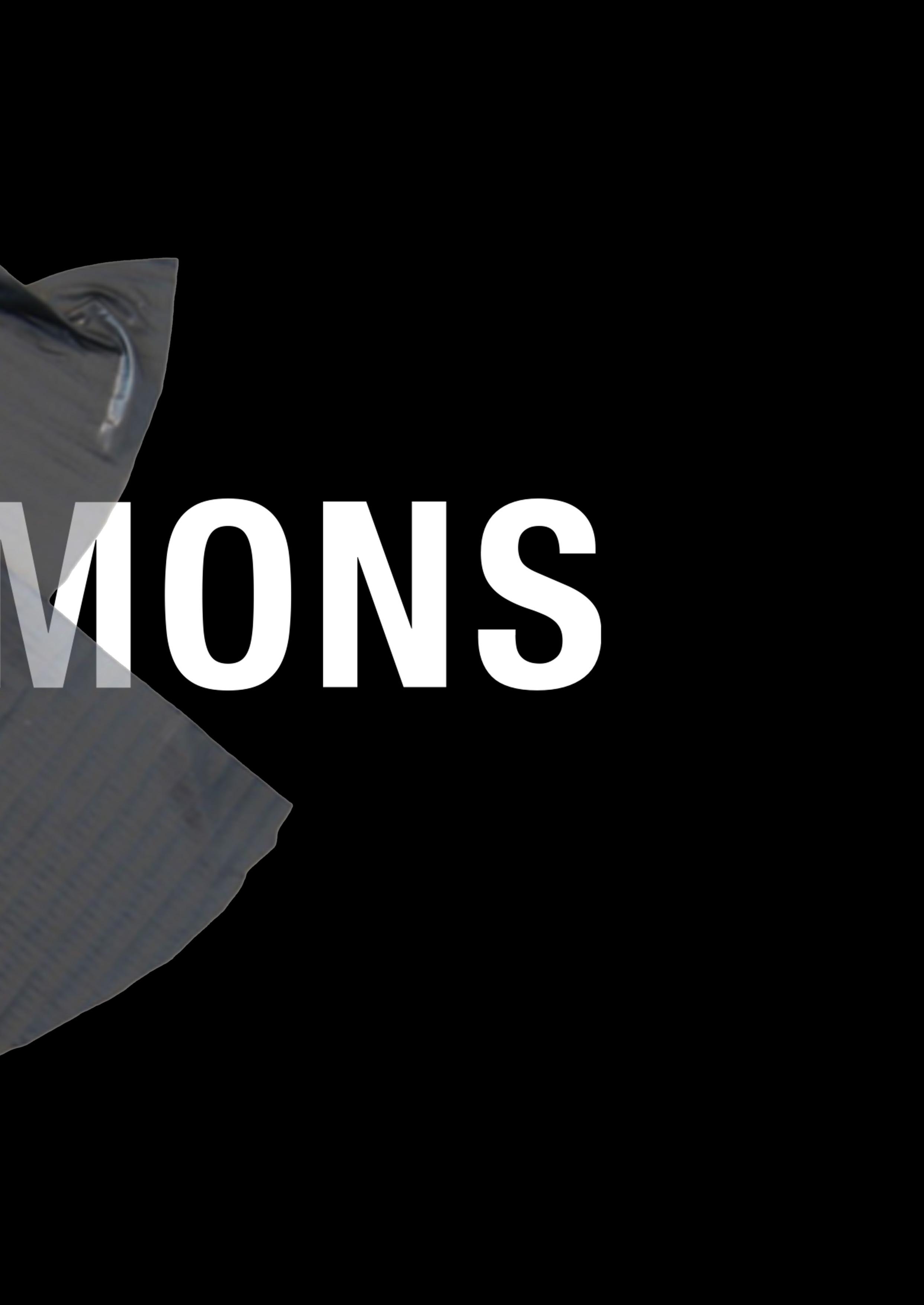
Dudbridge, S. (N.D.). Prada biography. Retrieved from https://www.catwalkyourself.com Prada Group. (N.D.). Sponsorships - Fondazione Prada. Retrieved from https://www.pradagroup.com/en.html
Craven, Jo. (2011). Miuccia Prada. Retrieved from https://web.archive.org/web/20111015035957/http://www.vogue.co.uk/
Eckardt, S. (2015). Miuccia Prada on Communism and Why She’s Against Beauty. Retrieved from https://www.thecut.com Fondazione Prada. (N.D.). Venice. Retrieved from https://www.fondazioneprada.org/?lang=en
Fury, A. (2019). Ten Landmark Prada Catwalk Shows, In Miuccia Prada’s Own Words. Retrieved from https://www.anothermag.com Sleek Team. (2018). A brief history of Prada Linea Rossa: the OG athleisure line. Retrieved from https://www.sleek-mag.com
Deeny, G. (2018). Calvin Klein: Why Raf Simons’ tenure was doomed. Retrieved from https://ww.fashionnetwork.com
Dudbridge, S. (N.D.). Miu Miu. Retrieved from https://www.catwalkyourself.com
McGarrigle, L. (2017). Raf Simons Explains Why He Left Dior For Calvin Klein. Retrieved from https://www.highsnobiety.com
Cowles, C. (2012). Raf Simons at Jil Sander: A Retrospective. Retrieved from https://www.thecut.com
Raf Simons. (N.D.). About History Of My World. Retrieved from https://www.historyofmyworld.com
Prada. (2020). Prada announces co-creative directors. Retrieved from https://www.prada.com/gb/en.html
Rabkin, E. (2021). Raf Simons’ Debut Prada Collection: A Verdict. Retrieved from https://www.highsnobiety.com
Prada. (2020). SS 2021 Womenswear. Retrieved from https://www.prada.com/gb/en/pradasphere.html
Prada. (2021). FW 2021 Menswear. Retrieved from https://www.prada.com/gb/en/pradasphere.html
Prada. (2021). FW 2021 Womenswear. Retrieved from https://www.prada.com/gb/en/pradasphere.html
Prada. (2021). SS 2022 Menswear. Retrieved from https://www.prada.com/gb/en/pradasphere.html
Prada. (2021). SS 2022 Womenswear. Retrieved from https://www.prada.com/gb/en/pradasphere.html
Prada. (2022). FW 2022 Menswear. Retrieved from https://www.prada.com/gb/en/pradasphere.html
Prada. (2022). FW 2022 Womenswear. Retrieved from https://www.prada.com/gb/en/pradasphere.html
Prada. (2022). SS 2023 Womenswear. Retrieved from https://www.prada.com/gb/en/pradasphere.html
Prada. (2023). FW 2023 Womenswear. Retrieved from https://www.prada.com/gb/en/pradasphere.html
Image References:
Prada Sustainability (p.12) - https://vmagazine.com/article/prada-sustainability-loan/ Fondazione Images (p.16-19) - https://www.dezeen.com/2018/04/26/oma-fondazione-prada-torre-opens-quirky-interiors-renowned-contemporary-art-exhibition-atlas/ Prada collection images (p.38-59) - https://www.prada.com/gb/en/pradasphere.html
https://www.pradagroup.com/en.html
https://web.archive.org/web/20111015035957/http://www.vogue.co.uk/ https://www.thecut.com
https://www.anothermag.com
https://www.sleek-mag.com
https://ww.fashionnetwork.com
https://www.highsnobiety.com
https://www.prada.com/gb/en.html
https://www.highsnobiety.com
https://www.prada.com/gb/en/pradasphere.html
https://www.prada.com/gb/en/pradasphere.html
https://www.prada.com/gb/en/pradasphere.html
https://www.prada.com/gb/en/pradasphere.html
https://www.prada.com/gb/en/pradasphere.html
https://www.prada.com/gb/en/pradasphere.html
https://www.dezeen.com/2018/04/26/oma-fondazione-prada-torre-opens-quirky-interiors-renowned-contemporary-art-exhibition-atlas/